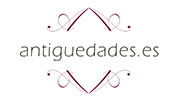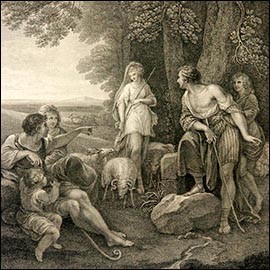Antique Engravings
Antique Engravings
Antique prints are works of enormous quality and value, perfect for beginning art collectors. Unlike oil paintings or bronze sculptures, to give two examples, prints are usually more affordable and are also easier to use as part of the decoration. But not all engravings are the same: there are many different techniques, used over the centuries, ...
Antique prints are works of enormous quality and value, perfect for beginning art collectors. Unlike oil paintings or bronze sculptures, to give two examples, prints are usually more affordable and are also easier to use as part of the decoration. But not all engravings are the same: there are many different techniques, used over the centuries, which give a very special imprint to the works made with them.
Normally, the names of these techniques come from the material with which the plates are made or from the process or products used to make them. The most common are as follows:
- Etching. The name of this technique comes from the popular term used to designate nitric acid, the chemical agent used to abrade the etching plate. The procedure arose in the 15th century in Europe, coinciding in two countries: Germany and Italy. During this century, it was not a technique widely used by artists; however, it is known that masters such as Albrecht Dürer or Lucas Van Der Leyden made etchings with iron and copper plates, respectively. The technique consists of applying an acid-resistant varnish on a metal plate and then tracing the drawing with a punch, scraping off the varnish to expose the metal. When the plate is dipped in acid, it corrodes only the exposed parts, leaving the drawing engraved on the plate. Then, it only remains to apply the ink and press the plate on the paper.
- Lithography. This technique consists of engraving plates on stone and then printing the drawings on paper. It derives from the Greek term "litos", stone. Its origin is later than that of etching; it is believed to have been discovered by the German printer Alois Senefelder in 1796. Lithography has been used by great artists, both antique and contemporary: we can mention names such as Francisco de Goya or Pablo Picasso, without going any further. There is a variant, called chromolithography, which allows to obtain different colors on the same work through successive prints.
- Xylography. Many antique and modern engravings have been made using the woodcut technique. Its name comes from the Greek word "xilos", wood, and refers to prints made by pressing an engraved and inked wooden plate onto paper. It is a technique that combines carving and engraving, since the plates are engraved by hand using gouges and chisels to hollow out the drawing to be reproduced. The woodcut was widely used by great artists such as Albrecht Dürer or the Japanese engravers of the Ukiyo-e school. The German expressionists of the early twentieth century, with Ernst Ludwig Kirchner at the head, recovered this then forgotten technique to disseminate their works.
- Photoengraving. This curious technique combines two artistic disciplines: engraving and photography. The process begins with the realization of a photograph, then impregnate a metal plate with a layer of a photosensitive and soluble in alcoholic solvent. The negative of the photograph is then placed in front of the plate and light is projected onto it; the light acts on the photosensitive product, removing the layer in zones. Finally, the plate is immersed in an acid solution that corrodes the areas "cleaned" by the light. We could say that it is a combination of the etching technique and the photographic process: an ingenious method for reproducing photographs. This technique, developed in 1820 by Joseph Nicéphore Niépce, has made it possible to preserve magnificent antique engravings of spectacular realism. A similar process was invented in 1856 by Louis Alphonse Poitevin and improved by Joseph Albert, known as phototypesetting.
There are many other techniques that have been used over the centuries to make antique engravings: aquatint, linography (engraving on linoleum plate), drypoint, mediatint... And other more modern ones, such as silkscreen printing, used by pop artist Andy Warhol. All of them made possible the popularization and dissemination of art, and today allow us to have fantastic masterpieces, perfect to include in our collections.
MoreNormally, the names of these techniques come from the material with which the plates are made or from the process or products used to make them. The most common are as follows:
- Etching. The name of this technique comes from the popular term used to designate nitric acid, the chemical agent used to abrade the etching plate. The procedure arose in the 15th century in Europe, coinciding in two countries: Germany and Italy. During this century, it was not a technique widely used by artists; however, it is known that masters such as Albrecht Dürer or Lucas Van Der Leyden made etchings with iron and copper plates, respectively. The technique consists of applying an acid-resistant varnish on a metal plate and then tracing the drawing with a punch, scraping off the varnish to expose the metal. When the plate is dipped in acid, it corrodes only the exposed parts, leaving the drawing engraved on the plate. Then, it only remains to apply the ink and press the plate on the paper.
- Lithography. This technique consists of engraving plates on stone and then printing the drawings on paper. It derives from the Greek term "litos", stone. Its origin is later than that of etching; it is believed to have been discovered by the German printer Alois Senefelder in 1796. Lithography has been used by great artists, both antique and contemporary: we can mention names such as Francisco de Goya or Pablo Picasso, without going any further. There is a variant, called chromolithography, which allows to obtain different colors on the same work through successive prints.
- Xylography. Many antique and modern engravings have been made using the woodcut technique. Its name comes from the Greek word "xilos", wood, and refers to prints made by pressing an engraved and inked wooden plate onto paper. It is a technique that combines carving and engraving, since the plates are engraved by hand using gouges and chisels to hollow out the drawing to be reproduced. The woodcut was widely used by great artists such as Albrecht Dürer or the Japanese engravers of the Ukiyo-e school. The German expressionists of the early twentieth century, with Ernst Ludwig Kirchner at the head, recovered this then forgotten technique to disseminate their works.
- Photoengraving. This curious technique combines two artistic disciplines: engraving and photography. The process begins with the realization of a photograph, then impregnate a metal plate with a layer of a photosensitive and soluble in alcoholic solvent. The negative of the photograph is then placed in front of the plate and light is projected onto it; the light acts on the photosensitive product, removing the layer in zones. Finally, the plate is immersed in an acid solution that corrodes the areas "cleaned" by the light. We could say that it is a combination of the etching technique and the photographic process: an ingenious method for reproducing photographs. This technique, developed in 1820 by Joseph Nicéphore Niépce, has made it possible to preserve magnificent antique engravings of spectacular realism. A similar process was invented in 1856 by Louis Alphonse Poitevin and improved by Joseph Albert, known as phototypesetting.
There are many other techniques that have been used over the centuries to make antique engravings: aquatint, linography (engraving on linoleum plate), drypoint, mediatint... And other more modern ones, such as silkscreen printing, used by pop artist Andy Warhol. All of them made possible the popularization and dissemination of art, and today allow us to have fantastic masterpieces, perfect to include in our collections.
There are no products in this category.
New products
-

Antique ivory and silver plated stethoscope, late 19th century
Antique stethoscope from the late 19th century in silver-plated metal...
-

Vintage pendant with shell cameo of Jesús del Gran Poder, carved c. 1970
Vintage pendant with a shell-carved cameo of Jesus del Gran Poder, circa...
-

Antique Roman Style Gilded Silver Chalice with Paten. France, 1932
Antique Roman-style chalice in gilded silver with paten. France, 1932....
-

Beautiful Antique 18 K Gold Ring with 7 Natural Diamonds
Antique 18K gold ring with 7 natural diamonds. Delicate openwork design,...
-

Antique Silver Reliquary. José Vilaplana. Valencia, Spain. Circa 1920
Impressive repoussé silver reliquary by José Vilaplana, Valencia, c....
-

Vintage 18K Gold Ring with 7 Natural Diamonds
Vintage 18K gold ring with seven natural diamonds in floral setting....
-

Antique Silver Chalice. Enameled Crosses. Valencia, Spain, 1942
Spanish chalice from 1942 in solid silver, gifted by the Church of...
-

Antique Silver Chalice and Paten. Granada Spain, circa 1900
Spanish chalice in white silver with matching paten, handcrafted....
Specials
-

Vintage Nicolet N. Pocket Watch. 18K Gold. 5-Minute Repeater. Switzerland, Circa 1960
Gorgeous Nicolet N pocket watch with...

